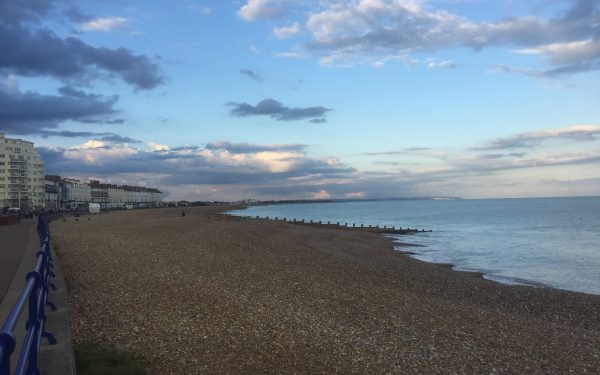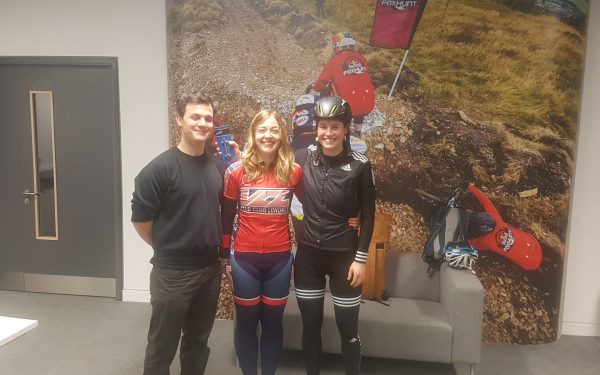Nine Tips For Promoting Women’s Races.

I have only been racing for around a year and a half and I am already super aware of common complaints that organisers have about poorly attended women’s races. I’m also friends with people who have been involved at a grassroots level with women’s racing for years now (looking at you, Huw). And a large part of my role as Social Media Secretary for London Women’s Racing involves promoting races. I’m by no means an expert in this stuff, but I’m working hard at it, and have already learned a lot, so I decided to share some of what I have learned, so that anyone running a women’s race might be able to raise better fields for more thrilling racing at a grassroots level across the UK.
The “Build it and They Will Come” Misconception.
The basic truth of it is that there are fewer women around on the racing scene right now. There are lots of great initiatives working to improve on that – LWR, women-only novice race training sessions, clubs encouraging their women riders to give racing a go – but right now the situation is that there are far fewer racing women than men. That doesn’t mean you shouldn’t be putting womens races on but it does mean that women are not under the same pressure to find and sign up to races that men are. That means that unlike with men’s races which almost always garner a field of 25+ just by listing it on the BC website, you are going to have to actively promote your race/s if you want women at them.
2. Women enter late and/or EOL a lot, because they can.

Women have a lot of races to choose from in the South East (this is great! And not the same for every region), likewise there are fewer women vying for entry spots, so for that reason, women often sign up late, or EOL, once they know what the field of riders is likely to be. Women will be more likely to hold off entering so they can react to their training load/plans up until the last minute. Every week I get a couple of emails and FB messages between women deciding which midweek race we’re all going to try and go to so there’s a decent field. What does that mean for organisers trying to promote races? Leave entry open until as late as possible. And DO NOT cancel a race with weeks to go because the sign up is low. I know you will have finite resources and it is a riskier business working that way, but we need people willing to take risks and learn from riders if we’re to grow women’s cycling.
3. Play to Your Strengths
Not everyone is looking for the same kind of race. Part of promoting your race requires you to understand what you’re offering. Some women will want a challenging field, others will want a 3/4 that’s a good novice race, others might want to know what the course is like, and what they can expect. Understand what you’re offering, sell your strengths, and give information. If there’s a well attended e1234 happening the same day as your 3/4, your message should be that you’re a better race for novices or those looking for some cat 3 points. If you’re on a course that’s great for novices, or good to test your climbing, say so. Finally, if you can give any extra info to help people know what to expect and how to find you, do. I wrote this article for London Women’s Racing, on all the crit circuits the league is racing on in 2017, which a lot of people have responded to saying it was super helpful. Link to that if you like!
4. Use Social Media
This sounds like a no brainer, more accurately it should read use social media well. Social media is increasingly visual, and the ways that it displays pictures are specific to different platforms. Main takeaway?

Make a poster, make it in a dimension specific to the platform you’re sharing on, and always attach an image or gif to a tweet/update if possible. Images grab attention. Instagram is better square or portrait, Twitter has a basic 2:1 timeline proportion that works best, there’s an article here that talks about the specifics of each platform. A poster should at the very least include a short web address they can go to, date, time, place, and a picture, ideally your poster should have women on the front. If you don’t have any good pics of women racing, talk to a friendly photographer like Huw Williams or John Orbea and give them a couple of quid for one. And tweet/fb often about it, find different ways to talk about the race (see above), plug the prizes, make a facebook event so that people can share it and express interest before signing up, and for goodness sake never just post the BC link – their metadata display is awful, shows no date/info, always write up the info as well as posting the link.
5. Cross Promote.
Word of mouth is important, but not only the riders’ word of mouth. Connect with teams, clubs, and leagues, promote their races, and ask (so long as it doesn’t clash!) if they could promote yours. It’s fine for them to say no, but it’s important to ask.
6. Show That the Race is Getting Interest.

Women want to race in big pelotons, they want to learn from one another and challenge one another. A great thing that Huw Williams does is ‘sign up’ graphics. They’re a great way to show people that there’s interest in the race, that if you’re investing time in racing, that particular race is exciting looking. He does very nice looking graphics because he knows how to use Illustrator – but if you don’t (and you don’t know anyone who does, try asking around though – in your club or your kids!) you could just as easily take a screenshot of the sign-up list on the BC site. Or if one or two from one team have signed up, mention then on Twitter, encouraging more to show out.
7. Have Prizes.
Have equal prizes to the men, definitely have prizes. Even if it’s just a High 5 gift pack, an Easter Egg, or a tenner. Have prizes, and talk about your prizes, and do a quick prize ceremony that people will have time to be around for. It builds community, pride, and also is a good thing to encourage people to your race with. Primes are also great, they break up the pack on flatter crit courses.
8. Don’t Blame Women
Don’t blame women for not being interested in your race. I have often heard organisers say things like “it’s a real shame no one turned out”, when really the onus was on them to promote it, and to provide an environment that it was enjoyable to race in (in the case I’ve heard those complaints, it’s typically true that they do neither particularly well). SE London is spoilt for mid-week races in the Spring/Summer. Crystal Palace Crits on Tuesdays, Lee Valley on Wednesdays, Hog Hill or Cyclopark on Thursdays. No one can race every one of those races every week, not to mention the fact it would cost around £300 a month, a lot of time and travel, and the invention of sustainable quantum superposition to do so. It’s a smaller racing community, and rather than complaining it’s not like the men’s community, you need to understand how its different, and build and play to your strengths within that.
9. Ask for Feedback
After working with Westerley CC on the second LWR crit at Hillingdon we got a lovely email from the organiser asking if we had any feedback on how they could do better next time. Talk to women about their experiences at your race. Ask people if they have any feedback. At the end of the day we’re all doing this with our spare time, so it can be a little exhausting, you might not have the time to do all of the above, and the women you ask might not have the time to give a long and thoughtful response. But stay open, keep asking, and work on what you can. I promise, it’ll make a difference.






